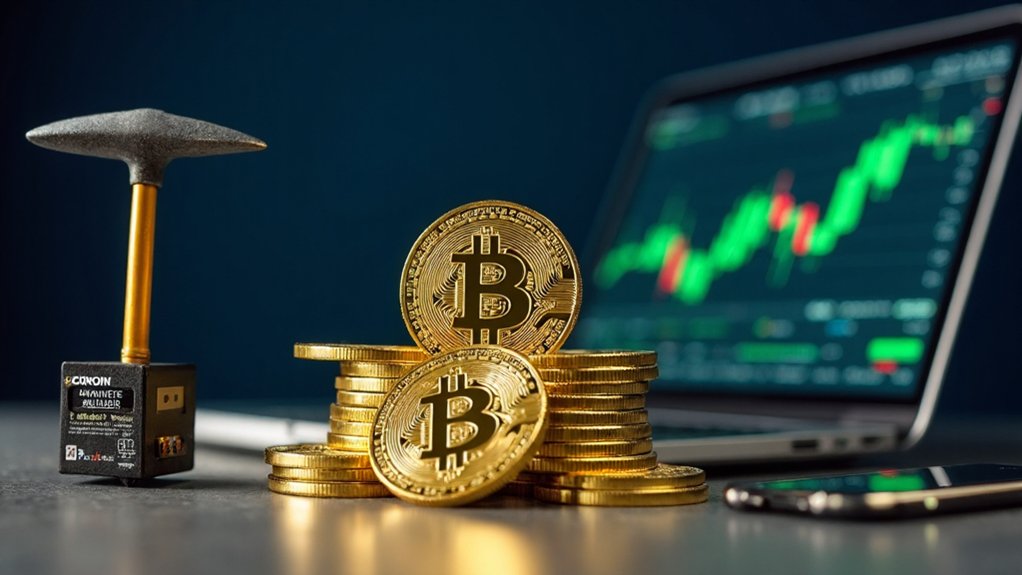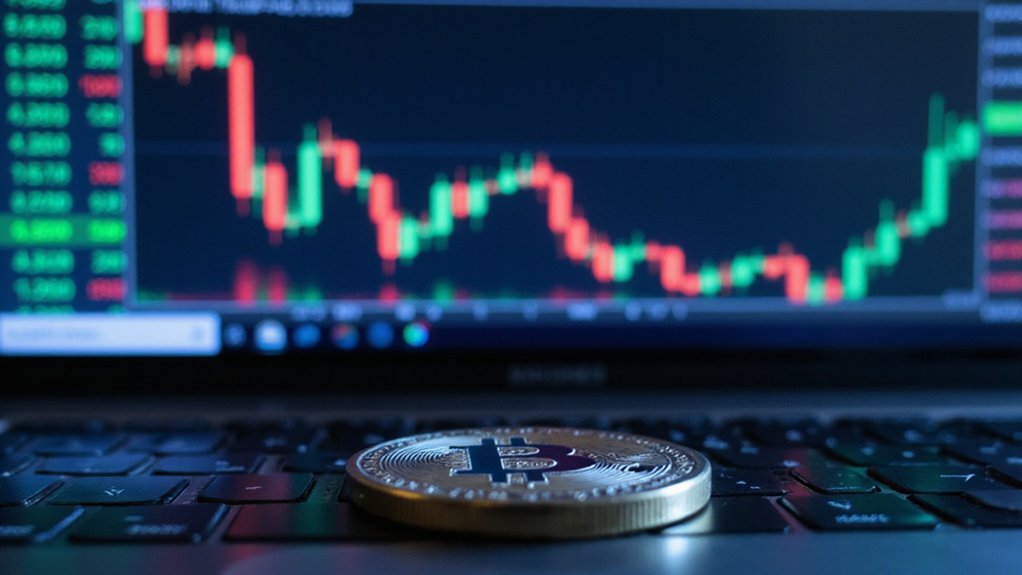In cryptocurrency contexts, “fiat” refers to government-issued currency that derives value solely from the issuing authority’s declaration, rather than from physical commodities. Unlike cryptocurrencies, which operate on decentralized networks beyond governmental control, fiat currencies (like USD, EUR, and JPY) provide relative stability through central bank regulation. This traditional money serves as the primary on-ramp for crypto markets, facilitating exchanges and establishing pricing benchmarks. The symbiotic relationship between these seemingly opposed systems reveals the peculiar paradox at the heart of digital finance.

Why does traditional currency—the very medium of exchange that has undergirded global commerce for centuries—remain so intricately woven into the fabric of cryptocurrency markets?
The answer lies in understanding what fiat actually represents in the crypto ecosystem: government-issued legal tender not backed by physical commodities but rather by the full faith and credit of the issuing authority.
Unlike their digital counterparts, currencies like the US dollar, euro, and Mexican peso derive legitimacy from centralized control and regulatory frameworks that have evolved since fiat’s first appearance in 11th century China.
The dichotomy between fiat and cryptocurrency manifests in fundamental structural differences.
While central banks meticulously calibrate fiat supply (with varying degrees of success, one might note), cryptocurrencies operate beyond governmental purview, deriving value from technological architecture and collective user confidence.
This decentralization—crypto’s raison d’être—creates a volatility profile that would make even seasoned forex traders blanch, contrasting sharply with fiat’s relative stability.
Practically speaking, fiat currencies function as essential gateways to cryptocurrency markets.
The conversion process—fraught with fees that would make Renaissance usurers blush—enables individuals to transform their government-backed money into digital assets via exchanges.
These platforms, operating at the intersection of traditional and digital finance, must navigate the labyrinthine requirements of AML and KYC regulations when processing these transactions.
Fiat’s influence extends beyond mere entry points; it serves as the liquidity backbone of cryptocurrency markets.
The flow of dollars, euros, and other conventional currencies into and out of digital assets greatly impacts market dynamics, investor sentiment, and ultimately, price action.
During market turbulence, the relationship between fiat and crypto becomes particularly pronounced as investors seek refuge in the comparative stability of traditional currencies.
Many users maintain fiat wallets for everyday transactions while gradually exploring cryptocurrency investments, benefiting from the regulatory protections afforded to traditional financial systems.
The symbiotic relationship between fiat and cryptocurrency represents one of finance’s great ironies: a system designed to circumvent conventional monetary structures remains, for now, inextricably dependent on the very currencies it sought to supplant.
Such is the paradoxical nature of financial evolution.
This dynamic exists despite cryptocurrency’s promise of financial inclusion through digital asset networks that operate independently from traditional banking infrastructure.
The value of fiat currency is officially maintained through government declaration rather than being backed by physical commodities like gold or silver as was historically the case.
Frequently Asked Questions
How Do Tax Regulations Apply to Crypto-Fiat Conversions?
Tax regulations classify crypto-fiat conversions as taxable events, triggering capital gains assessments based on holding periods.
Short-term holdings (under one year) face ordinary income rates, while long-term positions enjoy preferential treatment—a distinction that savvy investors leverage strategically.
The IRS mandates meticulous record-keeping of all transactions, with Schedule D filings required for reporting.
Non-compliance carries penalties (sometimes substantial), making precise transaction documentation not merely prudent but necessary in this regulatory landscape.
Which Cryptocurrencies Are Easiest to Convert to Fiat?
Bitcoin and Ethereum remain the most liquid cryptocurrencies for fiat conversion, boasting ubiquitous exchange support and trading pairs with major currencies.
Stablecoins like USDT and USDC offer near-frictionless conversions (minus the volatility anxiety that plagues their non-pegged counterparts).
For those seeking efficiency beyond the usual suspects, XRP and Litecoin provide respectable alternatives with their established market presence and relatively quick settlement times—though one should remember that conversion ease often correlates directly with regulatory scrutiny and KYC requirements.
Do Banks Restrict Fiat Deposits From Crypto Exchanges?
Many banks indeed restrict fiat deposits from crypto exchanges, citing regulatory compliance concerns and risk management protocols.
Financial institutions—particularly those with conservative risk appetites—implement varying degrees of restrictions, from outright prohibitions to enhanced due diligence requirements.
These limitations stem from anti-money laundering obligations, unclear regulatory frameworks, and apprehension about cryptocurrency’s volatility.
The resulting banking friction creates operational challenges for exchanges and users alike, a financial conundrum where traditional banking infrastructure struggles to accommodate emerging economic paradigms.
What KYC Requirements Exist for Crypto-To-Fiat Transactions?
Crypto-to-fiat transactions invariably trigger stringent KYC protocols—an unavoidable regulatory gauntlet when cryptocurrency interfaces with traditional banking systems.
Requirements typically include government-issued ID verification, proof of address, source of funds documentation, and sometimes facial biometrics.
The regulatory burden intensifies proportionally with transaction size, with exchanges implementing tiered verification frameworks that become increasingly invasive as monetary values rise.
Jurisdictional variations exist, naturally, but the trend toward heightened scrutiny remains consistent across global financial borders.
How Do International Regulations Affect Fiat-Crypto Exchange Rates?
International regulations profoundly impact fiat-crypto exchange rates through multiple mechanisms.
Regulatory arbitrage between jurisdictions creates price differentials, while sudden policy changes (witness China’s crypto bans) trigger market-wide volatility.
Central bank interventions—whether rate adjustments or quantitative easing—ripple through both traditional and digital asset markets.
Meanwhile, compliance costs associated with KYC requirements¹ are ultimately priced into exchange spreads, creating friction that manifests as price premiums in heavily-regulated markets versus their more laissez-faire counterparts.
¹As previously discussed, these vary substantially by jurisdiction.









